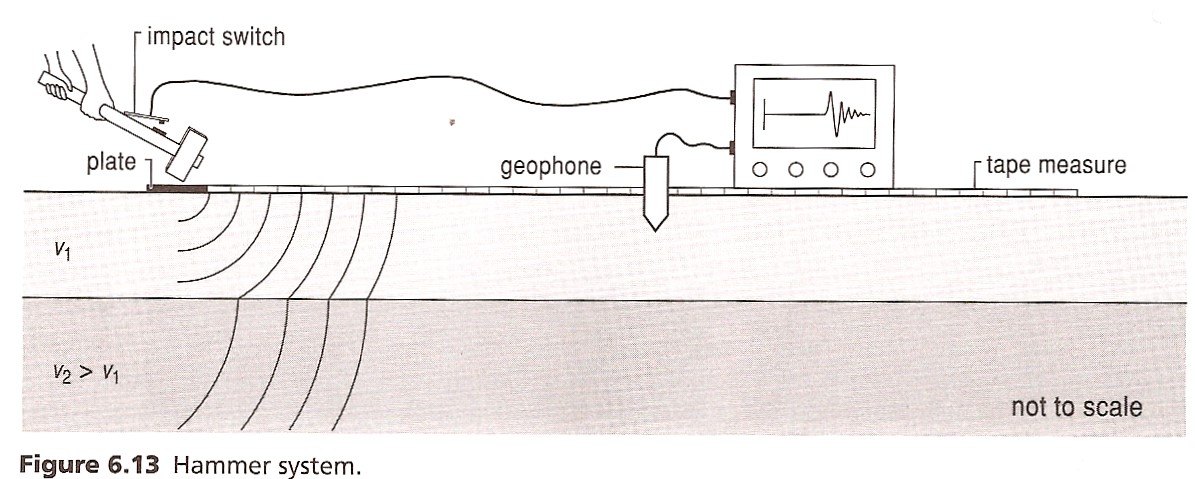Seismic Methods-- Refraction, Reflection, and Surface Wave
Seismic Overview:
In general, seismic methods are based on the interaction of elastic (sound) waves with materials in the subsurface as they are propagated through different earth materials. This method is subdivided into refraction, reflection and surface waves methods depending on the major wave type under consideration and the application context.
Refraction Seismic
Seismic refraction data allow us to determine the distribution of seismic velocity in the Earth -- which has a myriad of uses, from large-scale problems like the structure of rifted continental margins (shown at left), to small-scale studies of local geology and soil structure. Regarding hydrogeophysical applications, seismic velocities in the subsurface can help provide information about composition, porosity, and water content. Because of the ability to map velocity contrasts, refraction seismic can also be valuable in mapping bedrock geometry, determining aquifer thickness, mapping the water table and mapping faults.
To acquire refraction data, seismic waves are generated (either through a sledgehammer or weight drop) and the signal is measured with geophones which converts ground motion into electric pulse and sends it to the recording device.

Reflection and Surface Waves
Seismic Reflection work in much the same way as refraction but they measure the energy that is reflected (as opposed to refracted) back to the geophones and can be used to investigate much deeper depth. The surface waves methods use the surface waves (Rayleigh waves for example) and are a common way to estimate the velocity of shear waves in the near surface. Multichannel analysis of surface waves (MASWs), use Rayleigh wave dispersion curves to infer Vs 1-D models beneath a short array.
